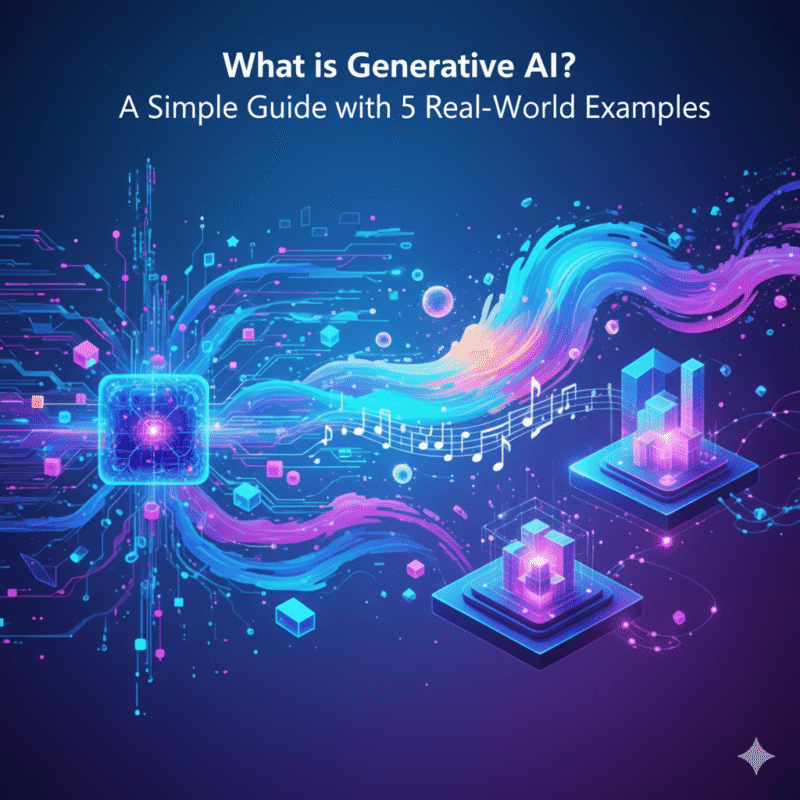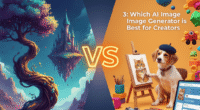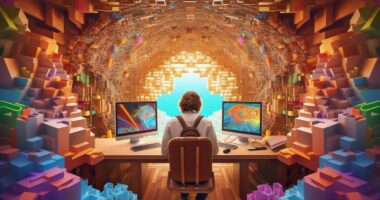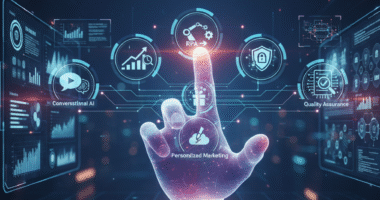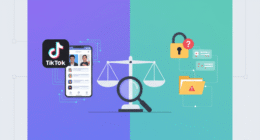I remember the first time I saw it happen. I typed a simple sentence into a chat box: “a photograph of an astronaut riding a horse on the moon.” A few seconds later, a stunning, photorealistic image appeared on my screen. It was not a picture someone found on the internet; it was a brand new image, created out of thin air, just for me. That was my first real “wow” moment with generative AI. This is the technology that is creating all the buzz, from AI art to chatbots that can write poems. But what is it, really? This guide will explain it all in simple terms.
What is Generative AI in the Simplest Terms?
Imagine a very talented student who has studied millions of books, paintings, and songs. This student does not just memorize the information. Instead, they learn the underlying patterns, styles, and structures. Now, you can ask this student to “generate” something new. For instance, you could ask them to write a poem in the style of Shakespeare or paint a picture in the style of Van Gogh. The student would be able to create something completely original, yet it would follow the patterns they have learned.
In essence, that is what generative AI does. It is a type of artificial intelligence that can create new, original content, like text, images, music, or code, based on the data it was trained on.
How is it Different from “Regular” AI?
Most AI you have used in the past is “analytical” AI. Its job is to analyze existing data and make a prediction or a classification. For example, your email spam filter is an analytical AI. It analyzes an incoming email and classifies it as “spam” or “not spam.”
Generative AI, on the other hand, does not just classify; it creates. It generates something that did not exist before. This creative ability is what makes it so revolutionary.
5 Real-World Examples of Generative AI You Can See Today
This technology is not just theoretical; it is already in many of the tools you use. Here are five powerful examples of generative AI.
1. Text Generation (Chatbots, Story Writing)
This is the most common example of generative AI. When you talk to a chatbot like Gemini or ChatGPT, you are interacting with a Large Language Model (LLM). As we explain in our guide, what is an LLM?, these models are trained to generate human-like text. They can answer questions, write emails, create stories, and much more.
2. Image Generation (AI Art & Blog Images)
Tools like Midjourney and DALL-E are examples of image-focused generative AI. They can turn a simple text description into a unique, high-quality image. This technology is a game-changer for content creators who need custom visuals for their blogs or social media. In fact, learning how to write effective prompts is becoming a key creative skill.
3. Code Generation (Helping Programmers)
Generative AI is also a powerful co-pilot for software developers. Tools like GitHub Copilot can suggest lines of code, write entire functions, and even help find and fix bugs. This allows programmers to work faster and focus on the more complex, creative aspects of their job.
4. Music & Audio Generation
Yes, generative AI can even compose music. There are now AI models that can create original royalty-free background music for videos, generate sound effects, or even produce songs in the style of a specific artist. This is opening up new creative possibilities for musicians and filmmakers.
5. Video & 3D Model Generation (The Next Frontier)
While still in its early stages, the next frontier for generative AI is video and 3D models. Companies like NVIDIA and Google are developing AI that can create short video clips or 3D objects from a text prompt. This will have a massive impact on everything from game development to movie production in the near future. For more on this, you can check out the latest research from a source like the NVIDIA AI Blog.
My Personal Take: Why This is More Than Just a Fun Toy
When I first started playing with image generation, it felt like a fun novelty. I created pictures of cats in space and surreal landscapes. However, I quickly realized that the true power of generative AI is its ability to act as a creative multiplier. As a writer, it helps me overcome writer’s block by brainstorming ideas. As a content creator, it allows me to produce unique visuals that perfectly match my articles. It has not replaced my skills; it has enhanced them. I believe this technology is one of the most powerful creative tools ever invented, and we are only just beginning to scratch the surface of what is possible.

Conclusion: Generative AI is Your New Creative Partner
In conclusion, generative AI is not just another piece of tech jargon. It is a fundamental shift in how we create. It is a tool that allows us to turn our ideas into text, images, and more, simply by describing them. By understanding what it is and how it works, you can start to see it not as a threat, but as a powerful new partner in your creative journey.
Which Example Surprised You the Most?
What’s the most amazing thing you’ve seen created with generative AI? Share it in the comments below! Download our free “Top 5 Free Generative AI Tools” checklist to start creating today.
